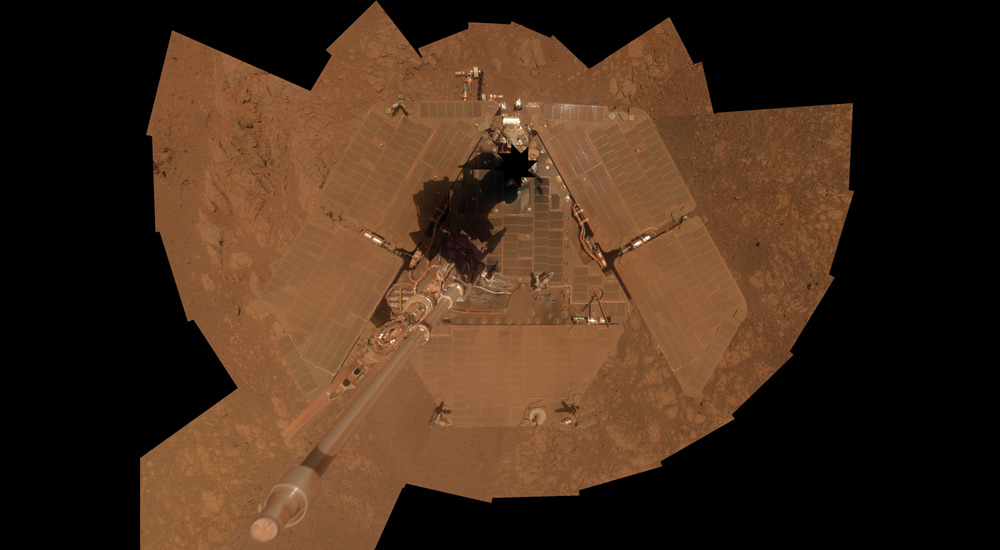Donut-like rock found on Mars puzzles scientists

This composite image released by NASA shows a self-portrait that was taken by the NASA rover Opportunity weeks before its tenth landing anniversary on Mars. AP
WASHINGTON—A strange rock that looks like a jelly donut has appeared on Mars, and scientists are closer to figuring out how it got there, a top expert of Nasa (National Aeronautics and Space Administration) said on Thursday.
The small, round object suddenly popped up in pictures taken 12 days apart by the US space agency’s decade-old Opportunity rover.
On Dec. 26, 2013, it was not there. On Jan. 8, it was. But what is it?
“It looks like a jelly donut, white around the outside, red in the middle,” said Steve Squyres, the principal investigator of the Mars Exploration Rovers.
Clearly a rock
He described the tint as of a “weird deep red color, not a Martian kind of red,” which is more of a rusty hue.
One thing is for sure. This is not a fried, sugary pastry.
“We have looked at it with our microscope. It is clearly a rock,” he told reporters in a briefing to mark 10 years since Nasa’s solar-powered Opportunity landed on the Red Planet.
But it is a kind of rock no earthling has seen before.
Squyres said scientists believe the rock, named “Pinnacle Island,” got there when the aging rover did a pirouette turn in the dusty Martian soil and knocked loose a chunk of bedrock that rolled a short distance downhill.
“We think that in the process of that wheel moving across the ground, we kind of flicked it, kind of tiddly winked it out of the ground and it moved to the location where we see it,” Squyres said.
Exposing history
Still, scientists have not found the divet the rock would have left behind. They think it is hidden beneath one of the rover’s solar arrays.
The Opportunity team plans to maneuver the robotic vehicle around a bit more to see if they can find the spot from which the rock emerged.
As to why it is of such an unusual color, Squyres said it may be that humans are witnessing a surface that has not been exposed in a very, very long time.
“It appears that it may have flipped itself upside down,” he said.
“If that is the case, what we are seeing is the surface, the underside of a rock, that hasn’t seen the Martian atmosphere for perhaps billions of years.”
Strange composition
Already, an analysis of the rock with the Opportunity’s spectrometer has shown a “strange composition, different from anything we have seen before,” he said.
The rock has a lot of sulphur, along with very high concentrations of manganese and magnesium.
“We are still working this out. We are making measurements right now. This is an ongoing story of discovery,” he said.
Microbial life
Opportunity is one of two Mars Exploration Rovers. Its companion, Spirit, stopped communicating with Earth in 2010.
Both have lived long beyond their planned 90-day missions and have made important discoveries about water on Mars and environments that might have supported microbial life in the distant past.
John Callas, Mars Exploration Rover’s project manager at Nasa’s Jet Propulsion Laboratory, said Opportunity is “still in very good health.”
Martian wind
The rover has an arthritic arm, a hobbled front wheel and two broken science instruments, but has stayed relatively stable over the past two years, he said.
The Martian wind periodically clears dust off its solar arrays, allowing it to keep pressing on.
It is now exploring the rim of a 22-kilometer wide crater called Endeavor.
Its younger and more robust cousin, a Nasa rover called Curiosity, landed on the Red Planet in 2012.
RELATED STORIES
India says its Mars spacecraft on course
Dutch treat: One-way ticket to Mars